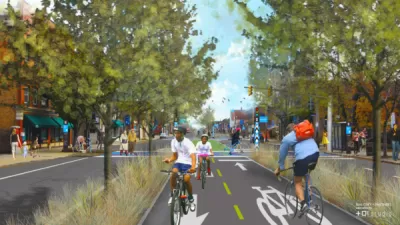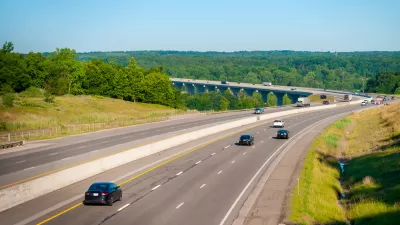[Updated] The Northeast Ohio Areawide Coordinating Agency will provide the funding for two ambitious protected bike lanes in Cleveland.

The Northeast Ohio Areawide Coordinating Agency, a regional transportation planning agency in the Cleveland area, has announced the allocation of $47 million in federal transportation funding to 21 projects, including the city's first protected bike lanes.
Steven Litt reports the details of the funding allocation, focusing especially on the two protected bike lane projects—one called the Midway, "which would extend 2.5 miles along the middle of Superior Avenue from Public Square to East 55th Street," and another called the Lorain Avenue Cycle Track, "which would run along the north side of the avenue between West 20th and West 45th Streets, and the south side from West 45th to West 65th."
Litt provides more detail on the positive reaction the funding garnered in Cleveland, while also pointing to the Indianapolis Cultural Trail as a precedent for the two projects, a comparison he has made before.
[The headline was corrected to reflect the specific amount for the bike lane projects.]
FULL STORY: NOACA boosts protected bike lane projects in Cleveland with spending package

Alabama: Trump Terminates Settlements for Black Communities Harmed By Raw Sewage
Trump deemed the landmark civil rights agreement “illegal DEI and environmental justice policy.”

Planetizen Federal Action Tracker
A weekly monitor of how Trump’s orders and actions are impacting planners and planning in America.

The 120 Year Old Tiny Home Villages That Sheltered San Francisco’s Earthquake Refugees
More than a century ago, San Francisco mobilized to house thousands of residents displaced by the 1906 earthquake. Could their strategy offer a model for the present?

Opinion: California’s SB 79 Would Improve Housing Affordability and Transit Access
A proposed bill would legalize transit-oriented development statewide.

Record Temperatures Prompt Push for Environmental Justice Bills
Nevada legislators are proposing laws that would mandate heat mitigation measures to protect residents from the impacts of extreme heat.

Downtown Pittsburgh Set to Gain 1,300 New Housing Units
Pittsburgh’s office buildings, many of which date back to the early 20th century, are prime candidates for conversion to housing.
Urban Design for Planners 1: Software Tools
This six-course series explores essential urban design concepts using open source software and equips planners with the tools they need to participate fully in the urban design process.
Planning for Universal Design
Learn the tools for implementing Universal Design in planning regulations.
Clanton & Associates, Inc.
Jessamine County Fiscal Court
Institute for Housing and Urban Development Studies (IHS)
City of Grandview
Harvard GSD Executive Education
Toledo-Lucas County Plan Commissions
Salt Lake City
NYU Wagner Graduate School of Public Service




























